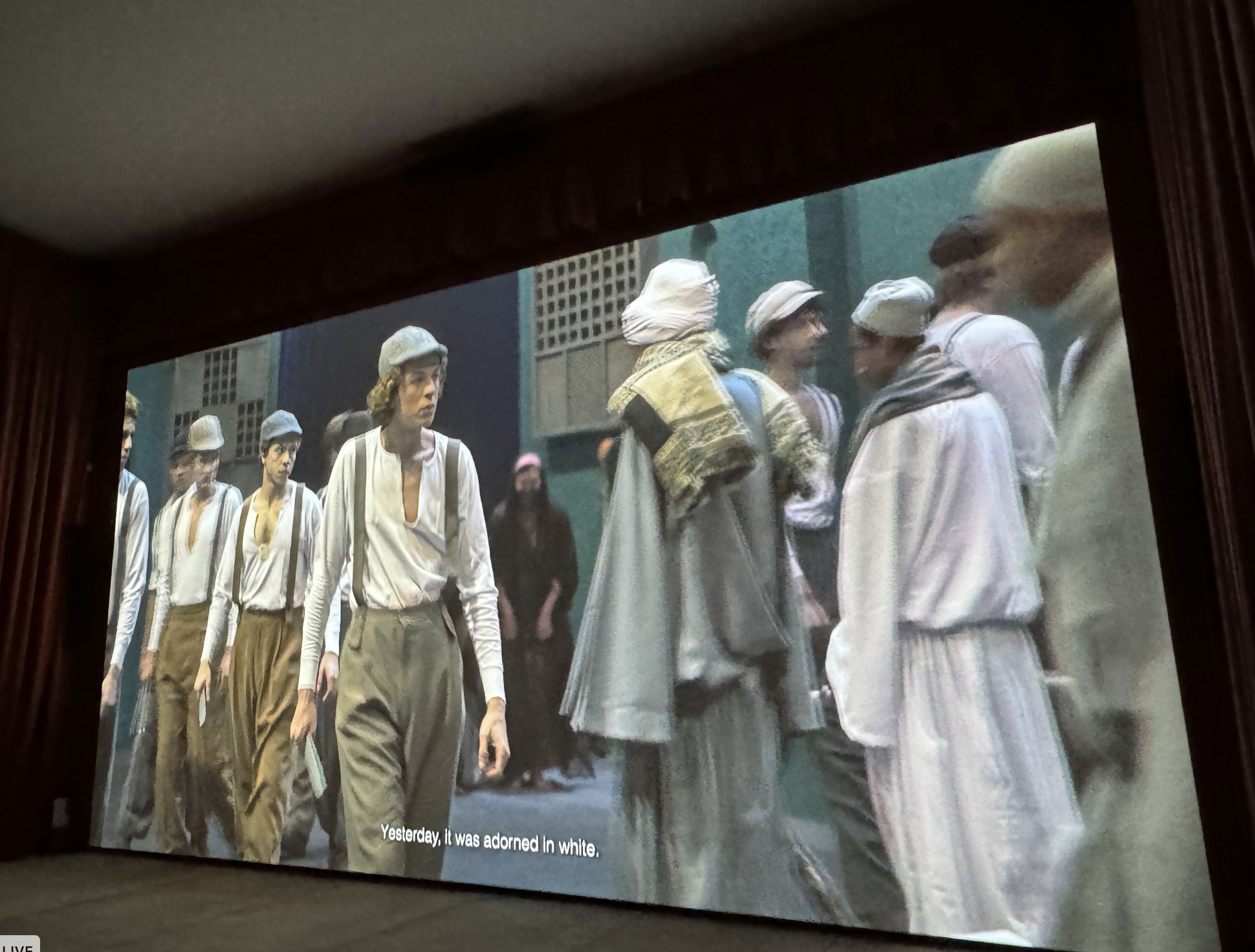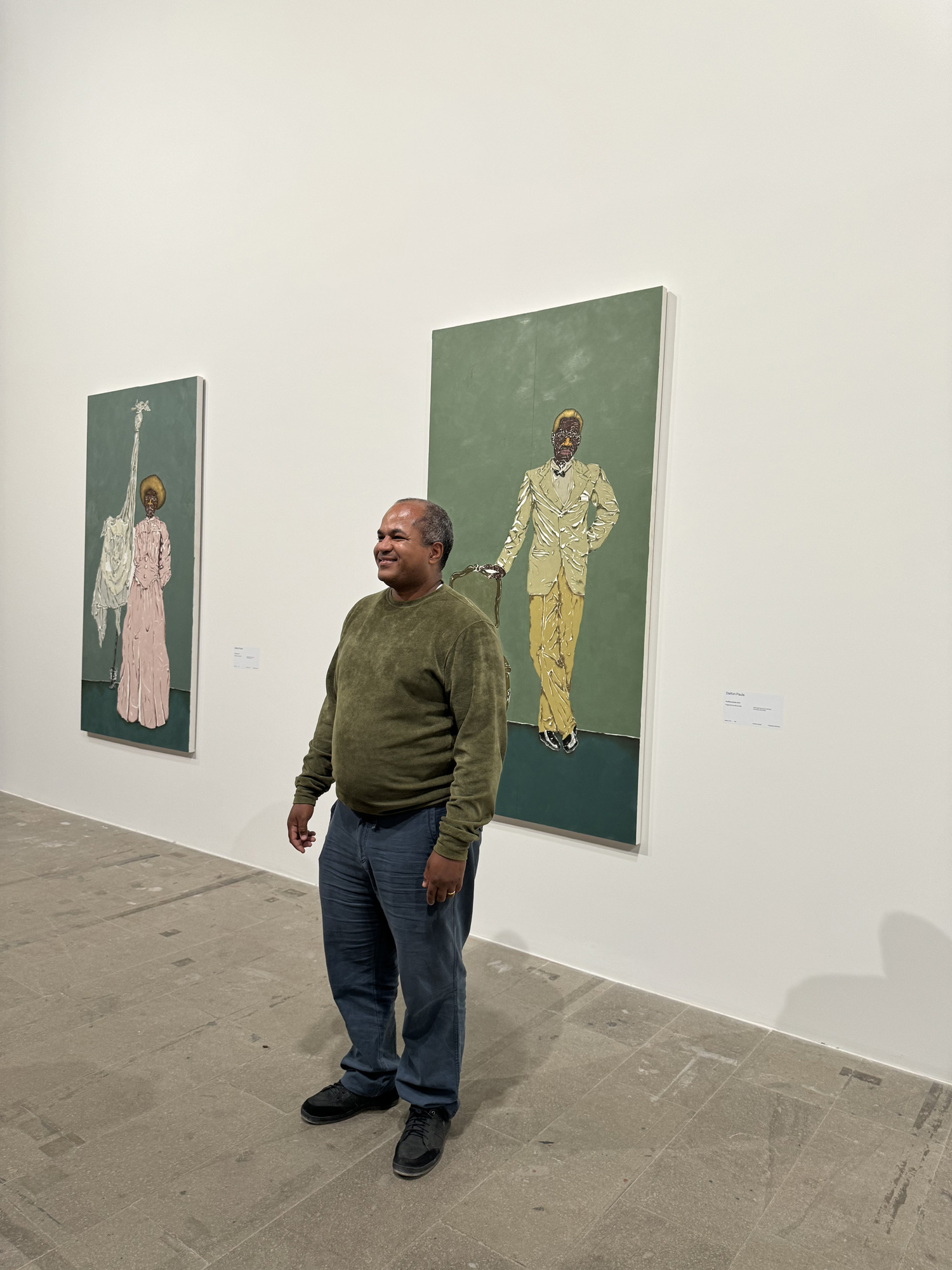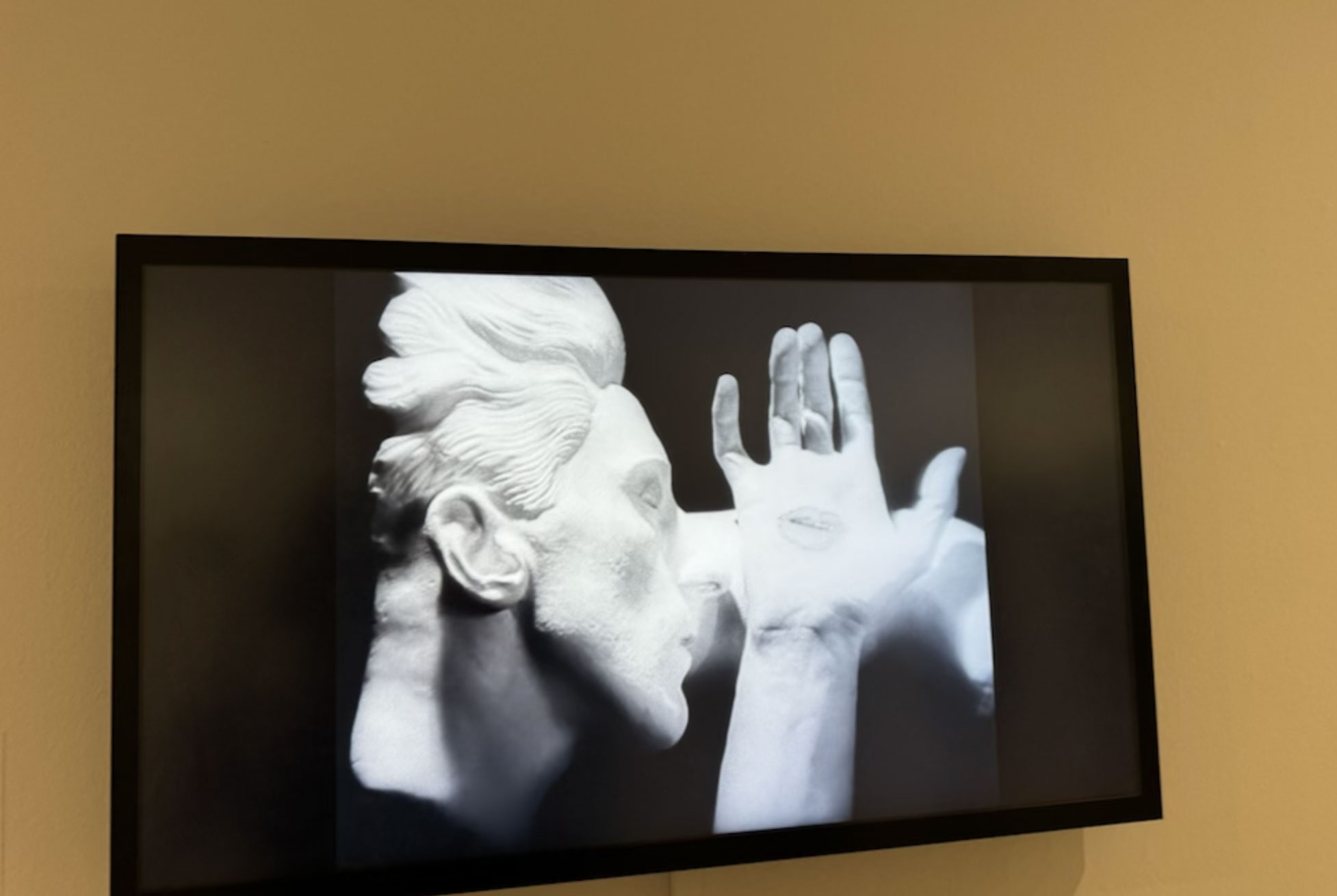The Art Lawyer's Diary: Reflections on the 60th Venice Biennale: Foreigners Everywhere – Part II
May 31, 2024
Listen, Look, Learn, Love
By Barbara T. Hoffman
Did you know there are currently 200 Biennales around the globe? Notwithstanding, the Venice Biennale is the “mother of all” Arte Biennale, and, thus, a most prestigious event for nation-states and artists, is to take center stage here. It is incredibly significant that the Biennale governance has selected as the artistic director, the self-described first queer curator and first curator from the global south, Adriano Pedroso, who in his turn, has invited more than 330 artists, almost 400 considering collectives, to participate for the time in the Biennale curated exhibitions at the Giardini and Arsenale. A place at the table for those artists with different origin theories, world views, and theories of human beings’ relationships to nature, time, and history promotes a dialogue to transcend colonial hegemony and dominance of the current art world’s structure. If only for the fleeting period from April 13 through November 24, 2024, the closing date of the Biennale. Artists evoke our collective histories in the present to imagine a future which transcends colonial hegemony and anti-western sentiment. If we only listen, learn and respect the "other", we may collectively preserve our planet for future generations (and on a more micro scale, the art world and biennales, of course).
The task of writing about this event, the collateral events, and other exhibitions is daunting. I cannot and do not think it is within my expertise or interest to do yet another art critic’s journalistic review of everything. There is a value, too, in not doing the scoop and, or the frontline coverage. This Biennale and its official collateral events are filled with complex and layered artistic expression and meaning. I find myself continuing to turn over the pavilions I visited, and the artists and their work encountered in the Arsenale, Giardini, and other curated events. My present memory and understanding of the historical moment and meaning continue turning and churning as I see new threads and connections relevant to my objective as an art lawyer and cultural critic of art and politics as it relates to structures of law, politics, and art.
More in-depth review of exhibitions, cultural events, politics and art law can be found at my Art Lawyer’s Diary. Join my email list on my website to receive future issues and read past editions.
The artists in the curated exhibition and the pavilions challenge contemporary Western philosophy. In particular, Foreigners Everywhere can be seen from the vantage point of the colonized, the indigenous inhabitants of the land with a rich culture and civilization destroyed or reinvented by the colonizer. Notions of time, space, and relation to the land, our ancestors, and the universe are challenged, as well as ways of seeing and being.
In PART I, I discussed the Australian Pavilion, Kith and Kin. The sentiments of these quotes from the indigenous artists Archie Moore and Ellie Buttrose, curators of Kith and Kin, find expression and voice in other artists. Archie notes that in indigenous culture, there are several people you call mother and father, brother, and sister. "The family tree shows a 65,000-year scope of time…I wanted to show how long aboriginal cultures have existed, and despite invasion, massacres, and systemic incarceration, continue to exist now"…In the First Nation, the notion of kinship and time, the present, past, and future, share the same space here and now. The curator states that "by placing 65,000 years of family on a single continuum, kith, and kin immerses audiences in the co-presence of ancestors and time and by doing so, Archie enfolds each of us into the everywhere.
The Egyptian pavilion, featuring Wael Shawky’s Drama 1872 (one of my favorites), similarly criticizes the revisionist histories told by colonial occupiers. Time and history do not begin with the "foreigner”. Shawky and other artists reflect, if not absorb, the philosophy of Edward Said, a Palestinian professor at Columbia, who challenged Western views of history, particularly of Asia and the Middle East. Edward Said's 1978 publication Orientalism, which I read as a student, exposed European fantasies denigrating colonial subjects in a constant barrage of fetishization and “othering” across Asia and the Middle East. Andrea Villani, in an essay in the catalog for the Egyptian Pavilion, states: "The events of 1879-1882 in which past and present, facts and imagination, history and its fabrication, being a citizen or a foreigner, a hero or a traitor, become entangled." In looking backward and, at the same time, forwards, we could, therefore, ask ourselves: Can we ever be or go back to beings who are fair towards each other and our fellow species? Or could colonialism or rather "coloniality", the persistent dark side of European and Western modernity, the echo of an ancestral separation between hegemonic and subaltern mentalities and behaviors, which do not allow colonialism to end, the analog of the flood and fires of the ancient myths? Are we cursed by our own stories?"
Alternatively, might we, one day, be freed, thanks to them? Is this not also the underlying question posed by the Nigerian pavilion and its consideration of the past to find the solidarity and vision to imagine a brighter future? There are no bright lines or set boundaries here. The German pavilion artists pose the reality of the present as Thresholds.
In the British pavilion, Sir John Akomfrah's Listening All Night to the Rain alludes to the final ensemble of installations - "Iterations of acoustemology” - detours back to questioning the architectonics of the present and the specters of the past, with the idea of listening to the activism of the mind “Sir John states," I sense that one can know the world-that you can find a name, "an identity, and a sense of belonging- via the sonic."
These issues and questions, in my view, are best presented by the pavilions and the artists discussed below, while not excluding others that are too numerous to mention here.
Egypt - Wael Shawky; Drama 1882
I was introduced to Wael Shawky at MOMA PS1. His first solo exhibition there, Cabaret Crusaders, tells the story of the crusades, through Arab eyes, using marionettes for actors. In his new theatrical film, Drama 1882, Shawky continues his ongoing practice of historical renditions transforming the Egyptian Pavilion into the center-stage for a timely and critical conversation around the necessity of revisionist histories and the futility of war.
Shawky has created Drama 1882, a musical play about Egypt’s nationalist Urabi revolution against imperial influence (1879-82). The year 1882 was the year this revolt was crushed by the British, who then went on to occupy Egypt until 1956. Shawky says:
“There was a revolt led by the Egyptian Colonel Ahmed Urabi and his army against the Egyptian monarch, calling him a traitor because he fell prey to the British and French. The interesting thing about this discourse Is the idea of the foreigners - what does it mean to be foreigners? Who were they? They were the occupiers - it was not the idea of immigrants that we have today.”
In an essay on Shawky, the distinguished Egyptian critic and author Yasmine El Rashidi writes that Shawky’s practice is rooted in his deep relationship to the history and cultural heritage of the Arab world. His work adheres to the premise that history is a record of subjectively depicted sequences rather than indisputable facts, which he posits to create elaborately choreographed re-stagings and interpretations of historical events. By meticulously blurring lines of recorded fact and possible fiction, and studiously interweaving into his narratives the spiritual and whimsy, Shawky's work offers poetically alternate prisms with which to consider pivotal moments in history.
Nigeria - Nigeria Imaginary
The press information states “Nigeria Imaginary explores the role of both great moments in Nigeria’s history – moments of optimism – and the Nigeria of the mind—a Nigeria that could be and is yet to be. Presenting different perspectives and constructed ideas, memories, and nostalgias of Nigeria, Nigeria Imaginary leverages an intergenerational and diasporic lens to imagine Nigeria for the future. These voices are articulated via diverse mediums, from painting, photography, and sculpture to AR, sound, and film.”
“Yinka Shonibare CBE RA explores the Benin Expedition of 1897 and presents a new way to understand the looted objects. In contrast, Toyin Ojih Odutola reimagines a new world centered around the Mbari House. Onyeka Igwe and Abraham O. Oghobase explores the colonial hangover and questions the future of this legacy…”
Tunji Adeniyi-Jones, above, looks to the history of Nigerian modernism to evoke an alternative art-historical future.
Ndidi Dike presents several artworks: In a powerful work, she assesses the intersection between the 2020 EndSARS protests in Nigeria and the global movement of Black Lives Matter. In the image below, she is pictured with her work commemorating young individuals who have died from police brutality: the police stick represents the symbol of brutal, lawless violence, while the tags record the name of a person murdered by the police in a demonstration.
Precious Okoyomon, a child of Nigerian immigrants who grew up in the US, is interviewed by me about her work. She invites us into a dream state, placing us into the minds and perspectives of contemporary Nigerians so we can reimagine Nigeria with them.
British Pavilion - Sir John Akomfrah; Listening all Night to the Rain
Listening All Night to the Rain weaves together newly filmed material, archive video footage, and still images with audio and text from international archives and libraries. The catalog states “The exhibition tells global stories through the “memories” of people representing migrant communities in Britain. Each gallery space layers together a specific color field influenced by the paintings of American artist Mark Rothko, to highlight how abstraction can represent the fundamental nature of human drama…
The exhibition positions various theories of acoustemology: the study of how the sonic experience mirrors and shapes our cultural realities. Akomfrah draws on an acute acoustic sensitivity influenced by various formative experiences, from protests to club culture in 1970s-80s London. Akomfrah’s “cantos” are accompanied by a specific soundtrack, which layers archival material with field recordings, speeches, and popular and devotional music. Extending the sense of hybridity in the filmic collages, Akomfrah’s use of sound encourages us to consider the breadth of cultural identity in Britain more broadly.”
The complexity of the pavilion and its narrative are mind-boggling. It was and is not unusual for viewers to stay intently seizing upon the multiple benchmarks and references for hours. A timeline of events evidences the in-depth research of Akomfrah to document the historic events shaping memory and narrative. The only other artist of whom I am personally aware that mines historic archives, including music, to create a sonic and visual experience, as part of his artwork and exhibition design, is Adam Pendelton, as in the MOMA exhibition Who is Queen 2022. In a recent conversation at Pace, the curator of Pendelton’s first European solo exhibition at mumok - Museum moderner Kunst Stiftuna Ludwig Wien, mumok Curator Marianne Dobner, remarked how Austrians were drawn to the soundtrack of the exhibition and Pendelton’s use of Bach as random counterpoint to the digital repetition of historic texts.
The pavilion is well publicized, and I recommend visiting the website link for more information.
Germany - Thresholds and Echoes; On Migrant Listening, Ersan Mondtag, Yael Bartana, Ersan Mondtag, Louis Chude-Sokei (Giardini)
“Thresholds is about space, moving through a house, a building but also encountering the world through it. It is about passages, tunnels, and about how space gives rise meanings, particularly from culture to culture, ethnic group to ethnic group, and how communities in motion make home within spaces that are often inhospitable, and often incarcerate or expel them. After all, to speak of space is to speak also of borders.”
- Louis Chude-Sokei, Thresholds and Echoes: On Migrant Listening
Michael Akstaller, Yael Bartana, Robert Lippok, Ersan Mondtag, Nicole L'Huillier, and Jan St. Werner to navigate the verge, the gradation, the boundary under the title of Thresholds. Proceeding from alternative readings of history and the future, the contribution extrapolates realms of experience from the liminal.
Ersan Mondtag and five performers bring biographical fragments to life: workplace, factory, living quarters, and public space. His reference point is the life of his grandfather Hasan Aygiin, who came to West Berlin from Central Anatolia in the 1960s, made a living by working in the Eternit asbestos factories, and died due to this work. On a parquet floor transferred to Venice from an abandoned Brandenburg arts center, Mondtag crosses post-migrant history with forgotten biographies of the work-oriented society of the GDR. Through placing motifs from migrant and East German biographies at the center of the pavilion, Mondtag raises questions about post heroic historiography, representation, and narrative at the threshold of a post-industrial landscape.
“With her ongoing work Light to the Nations, Yael Bartana approaches a threshold in time and space: the present reality of planet Earth on the brink of environmental and political destruction. In an act of salvation, a spaceship, envisioned by the artist and named after a passage in the Book of Isaiah, carries multiple generations of humans toward unknown galaxies.”
Arsenale - Three artists who stand out, Santiago Yahuarcani, Rember Yahuarcani, and Dalton Paula
Going through the Giardini/Central Pavillion and the Arsenale, I wandered without a programmed agenda. The quality of the exhibitions and the selection of artists engaged me. I followed my eyes. Notwithstanding that these encounters were “subjective,” I share my “chance encounters.”
Coincidentally, the three artists who stand out in the Arsenale are from Brazil.
Dalton Paula is a multifaceted artist who lives in Brazil and is from Goiana. The image below is from the 16 Full Body Portraits (2023-2024) series of historical figures of African descent involved in or who lead anti-slavery movements in Brazil in the late 19th or early 20th century.
I was privileged enough to hear Santiago talk about his work, influenced by his spiritual practices, his ancestors and medicinal plants. He paints on canvas produced from palm bark by his wife, pictured below, a reminder that for indigenous people, finding art supplies and the cost of production require resources, which are often scarce.
Santiago Yahuarcani stresses how the climate catastrophe is not a recent event but part of a long history of colonial dispossession that begins with the eradication of the spiritual world and the powers that emanate from a close relationship with the land. Rember Yahuarcani belongs to the same white clan of the Ulitoto nation from the northern Amazon as Santiago. He invites us to immerse ourselves in the belief systems of another world with characters perpetually in motion to escape the narratives of the Western world and cultural eradication.
Not surprisingly, I also would be remiss not to mention or suggest a stop at the Pavillion of Brazil - renamed the Hãhãwpuá Pavilion (ancestral territory) - in the Giardini, on your way to visit the Egyptian Pavillion. The Pavillion brings together the Tupinambá Community and artists coming from the coastal peoples — the first to be transformed into foreigners in their own Hãhãw (ancestral territory) — in order to express a different perspective on the vast territory where more than three hundred indigenous peoples live (Hãhãwpuá). "The Hãhãwpuá Pavilion tells a story of indigenous resistance in Brazil, the strength of the body present in the retaking of territory and adaptation to climatic emergencies,” say the curators, adding,”The Tupinambá were considered extinct until 2001, when the Brazilian State finally recognized that not only had they never been exterminated, but that they were actively fighting to reclaim their territory and part of their culture, taken away by colonization”. This parallels the narrative and historical mythology used by the Australian government with respect to the aboriginal population until about the same time.
The Takeaways
This Biennale confirms the relevance of the Venice Biennale for art world citizens and the broader population. The dialogue and conversation of both the curated exhibitions and the National Pavillions is not always linear, often multilayered, and often full of contradictions. Others have found much to criticize. This is not the first international exhibition to make the case for an expanded vision of what is art and the global artworld.
Okwui Enzor’s 2002 Documenta, which is the international exhibition which occurs every five years in Kassel, was a milestone, in enlarging art world horizons and positioning artists of the 20th century avant-garde as just a few actors in a vast ebb and flow of world civilization. Though earlier shows like “Magiciens de la Terre” (Paris, 1989) expanded the canon to include non-western art, Enwezor featured 117 artists, where Europeans, Americans, Africans, Latin Americans, and Asian artists all had equal exposure. Enwezor offered a critique of the territorial approach to the Biennale represented by Venice to tackle the art world’s persistent Euro- and Western-centrism. He argued that the art world must expand its horizon to see and understand non western art in part, by juxtaposing the work under-appreciated artists of the Western canon with non-Western counterparts, highlighting affinities and contrasts to establish a dialogue and conversation which permitted the viewer to see the familiar in a new light. Okwui went on to curate the Venice Biennale and was the inspiration for the Sharjah Biennale, Thinking Historically in the Present (see my review of the Sharjah Biennale).
Adriano Pedrosa continues the call for inclusiveness and in a sense updates the art world to what has been occurring in the global economic and forum fuelled by the increasing and critical situation of climate change and out of control migrations. The art world cannot be a bubble. We require dialogue between the Global South and the Western world: listening, respecting, learning. Only then can we develop the sense of community and interconnectedness of our actions to create a sustainable future, participating, and acting as a global community. Some people have commented to me that this was a biennale too linked with commerce. Of course, one could mention the native American dance companies, who distributed cards for future performances, the sponsorships and financing of collateral events as well as pavilions by commercial galleries, including creating pavilions with globally marketed artists, to sustain the introduction of artists who seek global recognition We do see for years the porous boundaries and criteria between the art fair and the biennale. Is this good? Is this negative? Is it a problem for the Congolese critic of the capitalist society, to use art sales to finance land purchases in the Congo and use "the white box" to do so? Probably, but so what? Let's discuss this. Can this Biennale and the current art world go beyond identity politics to look at the art and revise the western canon or to understand as Canadian philosopher Marshall McLuhan famously observed “the medium is the message” (the “message” of any medium or technology is the change of scale or pace or pattern that it introduces into human affairs. 1964).
At the end of the day, if we look and listen, there is much in this Biennale, which touches the soul and resonates as a memory, again and again. For those who seek to judge or ask if this is art, I submit that is a starting point.
And If You Have Time
For those with time, there are several terrific off-site exhibitions in conjunction with the Biennale, some of which are housed in Palazzo and other historic structures. I highly recommend exploring the following works:
1. Willem de Kooning - Gallerie dell’Accademia
2. Shahzia Sikander - Palazzo Soranzo Van Axel, Collective Behavior
3. Lee Bae - Wilmotte Foundation, La Maison de la Lune Brûlée
4. Zeng Fanzhi - Scuola Grande della Misericordia di Venezia, Near and Far, Now and Then
5. Jean Cocteau - The Gugenheim
6. Dread Scott - All African Peoples Consulate. See New York Times here.
7. Wael Shakey's video with puppets - I am Hymn of the New Temples; Texas artist and activist Rick Lowe's solo exhibition - The Arch within the Arc
Both artists can be seen at Pallazo Grimani. Rick Lowe's urban abstractions are a revelation and stunning success for those of us who hear more about his preservation and community efforts. Plus, several Titan portraits to see for those who have had it with contemporary art.
Author

Barbara Hoffman
Barbara T. Hoffman is recognized internationally and nationally as one of the preeminent art, intellectual property, and cultural heritage lawyers. With more than forty years of practice in every aspect of the field, Hoffman has been acknowledged by her peers with leadership positions in the New York City Bar Association and International Bar Association, elected to Super Lawyers, Best Lawyers...

:sharpen(level=0):output(format=jpeg)/wp-content/uploads/2024/05/The-Art-Lawyers-Diary-1.jpg)

























:sharpen(level=1):output(format=jpeg)/wp-content/uploads/2024/05/The-Art-Lawyers-Diary-1.jpg)
:sharpen(level=1):output(format=jpeg)/wp-content/uploads/2024/04/5-Questions-with-Bianca-Cutait-part-2-1.jpg)
:sharpen(level=1):output(format=jpeg)/wp-content/uploads/2024/05/20231208_164023-scaled-e1714747141683.jpg)
:sharpen(level=1):output(format=jpeg)/wp-content/uploads/2024/04/header.jpg)
:sharpen(level=1):output(format=jpeg)/wp-content/uploads/2024/04/5-Questions-with-Bianca-Cutait-part-1-1.jpg)
:sharpen(level=1):output(format=jpeg)/wp-content/uploads/2024/03/5-Questions-with-Alaina-Simone-1.jpg)